Menu
Brown Leaves on African Violet Plants
Why do leaves turn brown on my African Violet plants and how to prevent it?
The main reasons are:
- Normal growth: As the plant grows, some of the older leaves on the outer ring will turn brown and it’s time to remove them as part of routine plant grooming.
- This is the normal aging process of the African Violet plant.

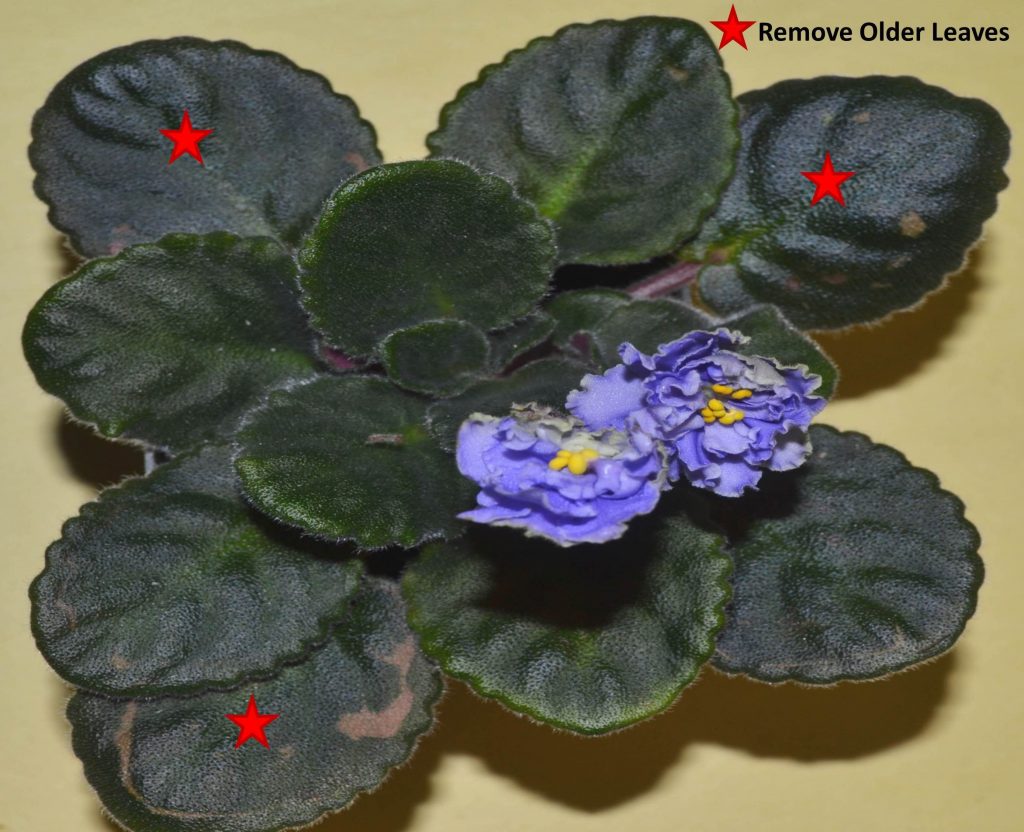
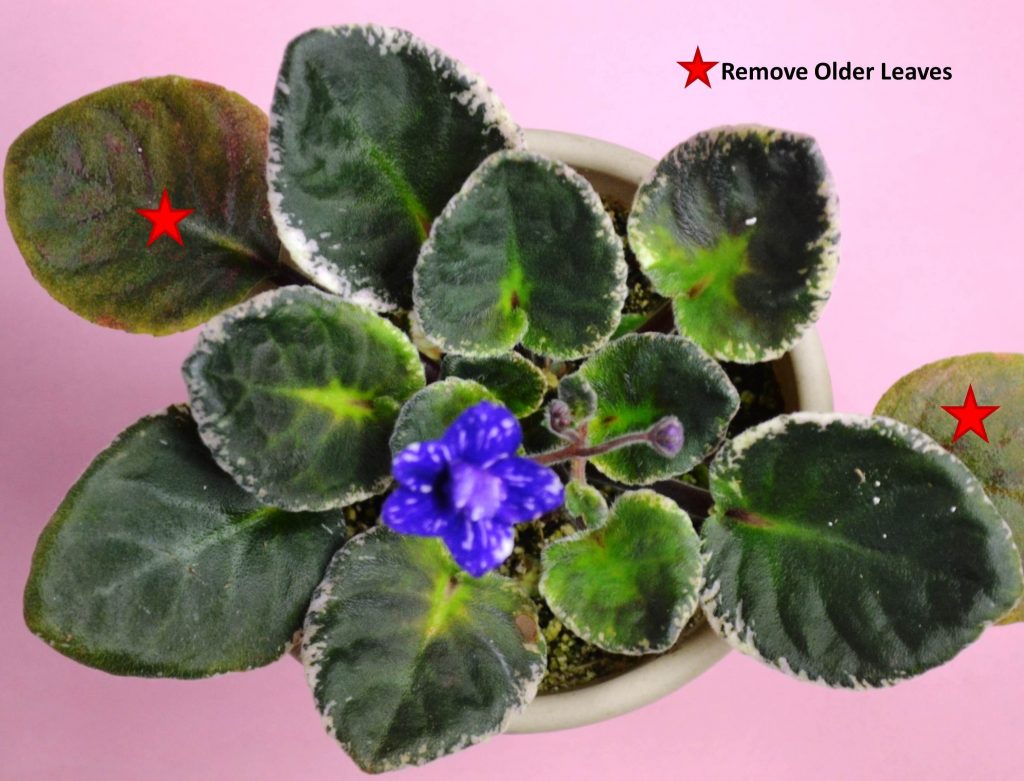
- Over-watering: if the soil mix is soggy and wet, it means it is saturated with water.
- This will cause the leaves to take up this excess water and become brown and limp.
- In this situation, its best to let the soil mix dry out in between watering’s.
- More helpful tips can be found in the “How to Water African Violet Plants?” article.
- The plant shouldn’t be bone dry (pot is really light weight when lifted), just such that the top of the soil is dry to touch.
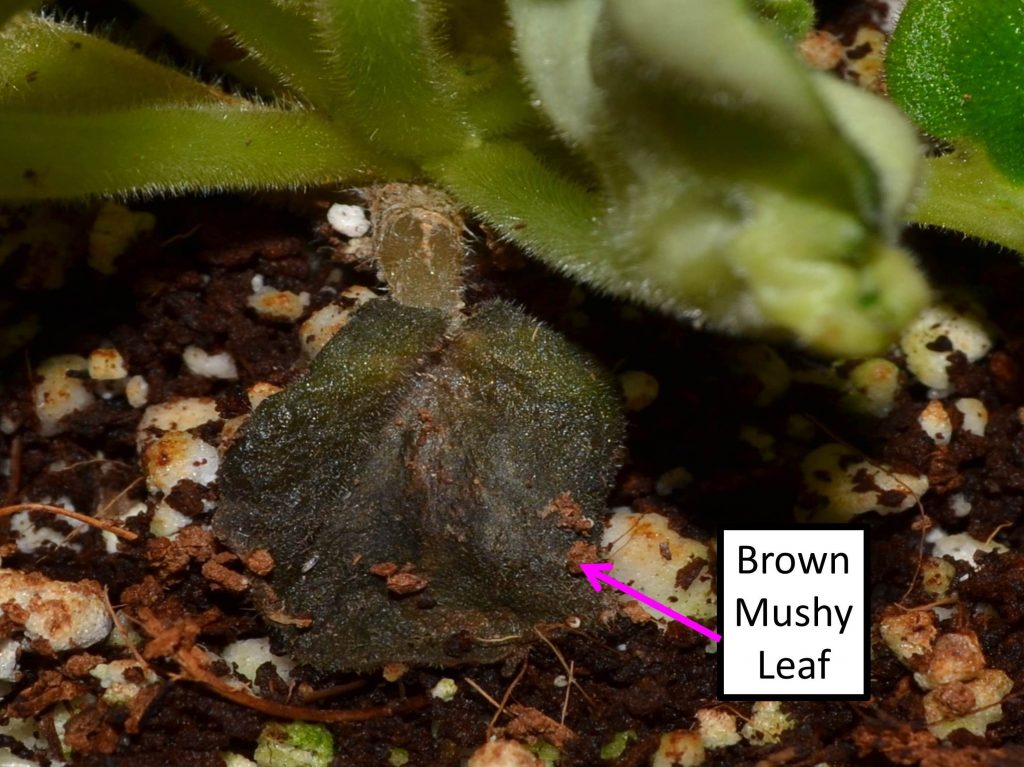
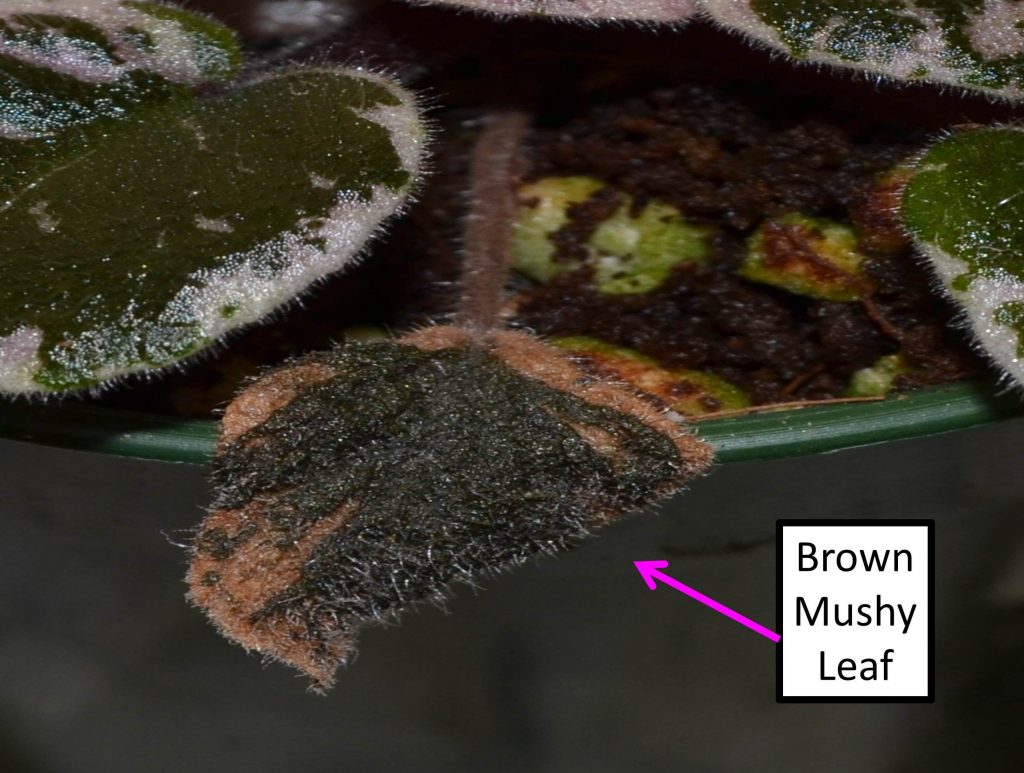
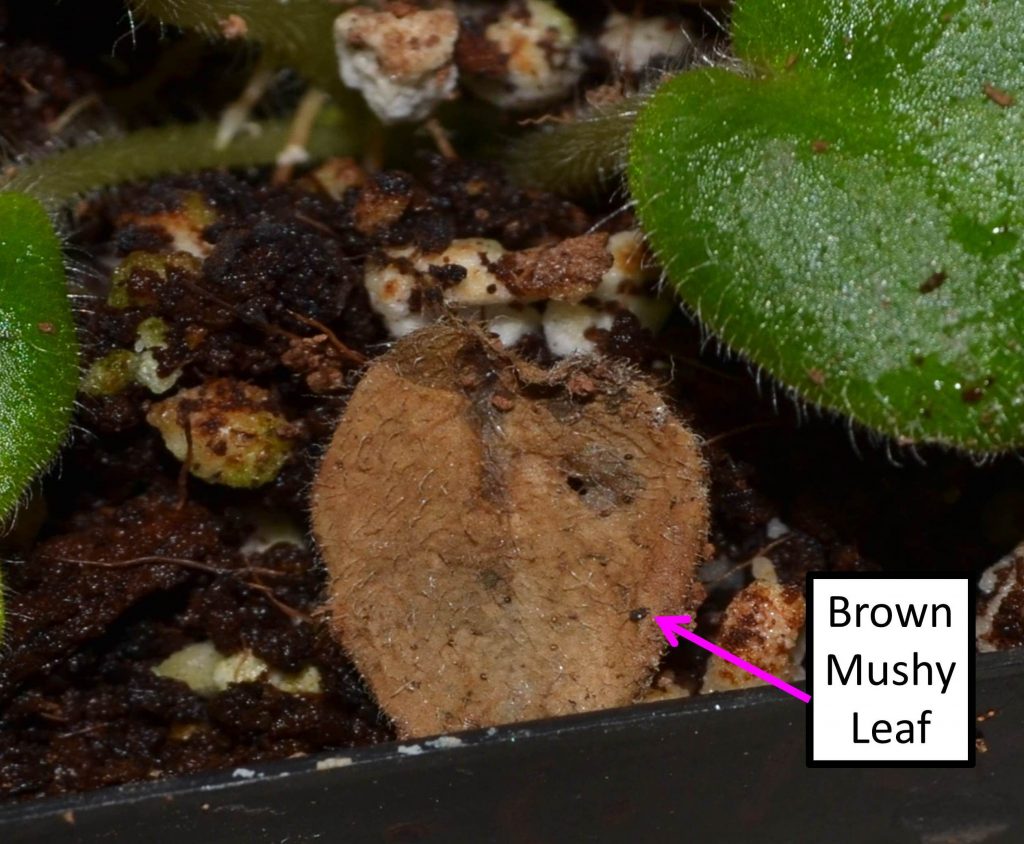
- Soil Mix: If the soil mix is too heavy, it can lead to water being collected in the soil resulting in brown mushy leaves.
- Always use a light airy soil mix containing perlite or vermiculite and peat moss for African Violet plants.
- This will help with better water drainage.
- More helpful tips can be found in the “African Violet Soil /Potting Mix” article.
- Water leaf-spotting: While watering African Violet plants, if water spills on the leaves, it can result in brown spots.
- If water does fall on the leaves, remember to wipe the water off and don’t let it collect on the leaves.
- Once in a while it’s good to clean the leaves with water, just gently wiping the leave with a moist tissue/cloth.
- However, if water starts to collect on the leaves, it can form brown spots over time.
- Remember, not to splash cold water on the leaves of the Violet, always water the soil mix from underneath the leaves.
- More general watering tips can be found in the “Ideal Conditions to Grow African Violets” article.
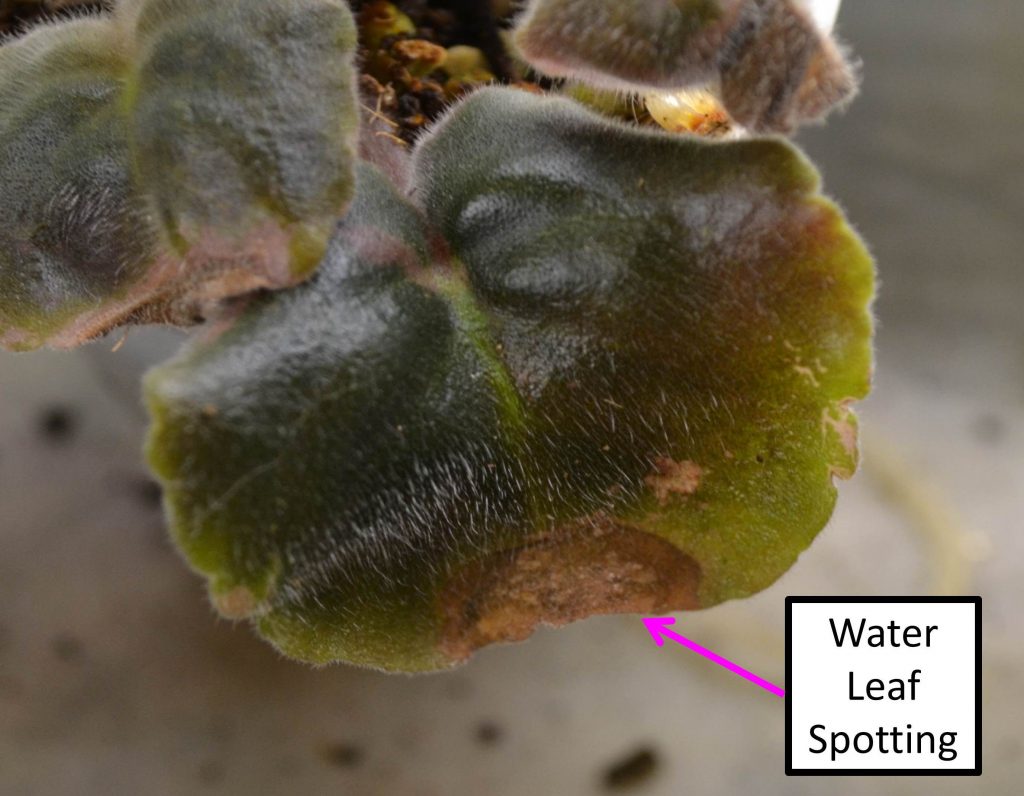
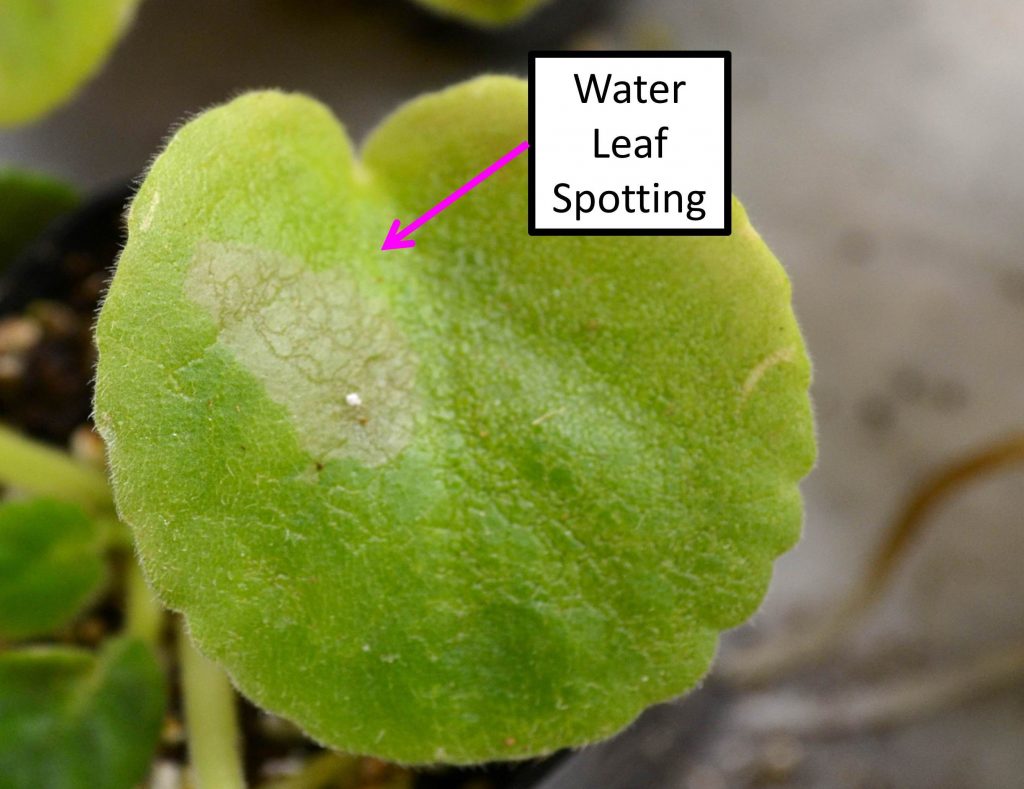
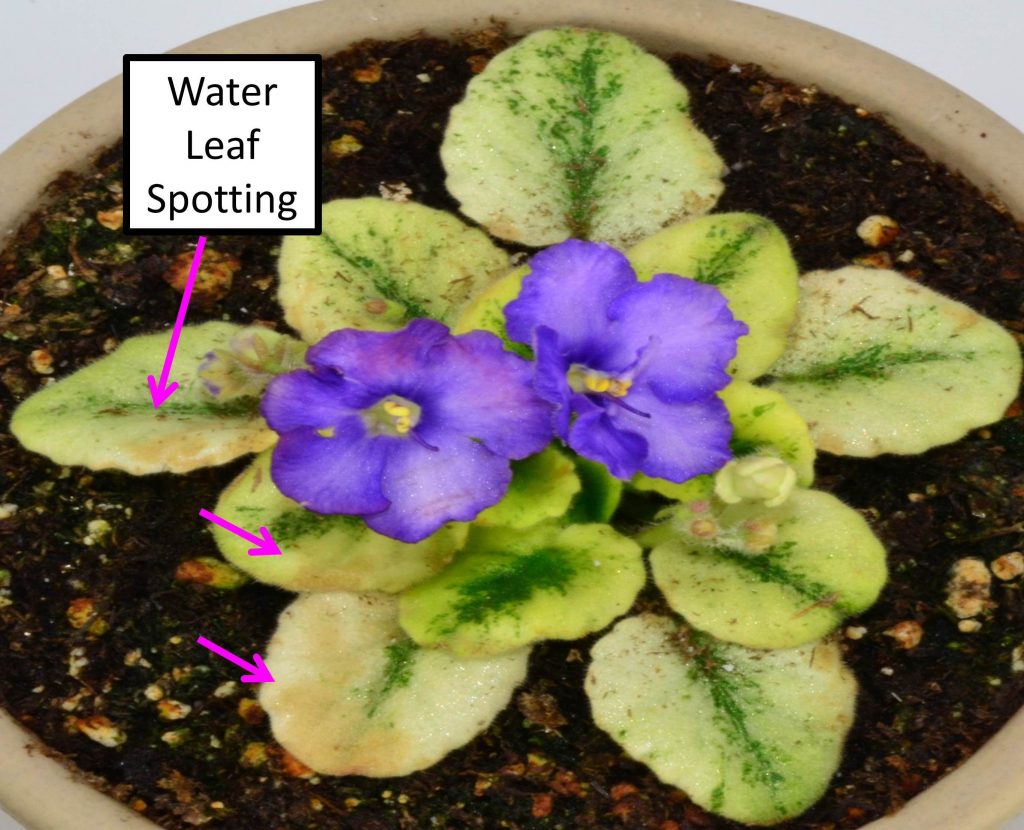
- Chloramine in water: In certain municipalities it is common to add Chloramine to the tap water; this chemical can be detrimental to the African Violet leaves.
- It can start with browning leaves, burning of leaves, and eventual dying off of the plant.
- Check with your water supplier if Chloramine is present.
- If it is, you can use spring water, distilled water or rain water for watering’s.
- Excessive light: If the plant is sitting in a hot sunny spot, the leaves will start to brown and get sunburned.
- Move the plant to a shaded area receiving indirect filtered light or pull down the shades, sheer curtains, to allow less light falling on the leaves.
- More information about natural light can be found in the “Natural Light for African Violet Plants” article.
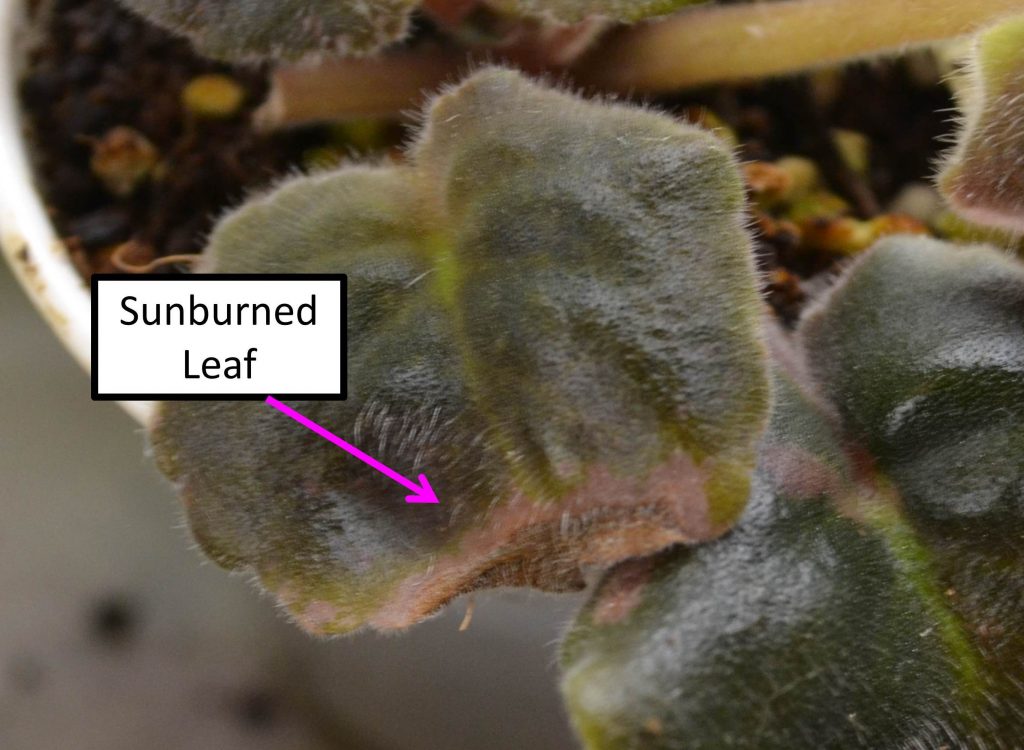
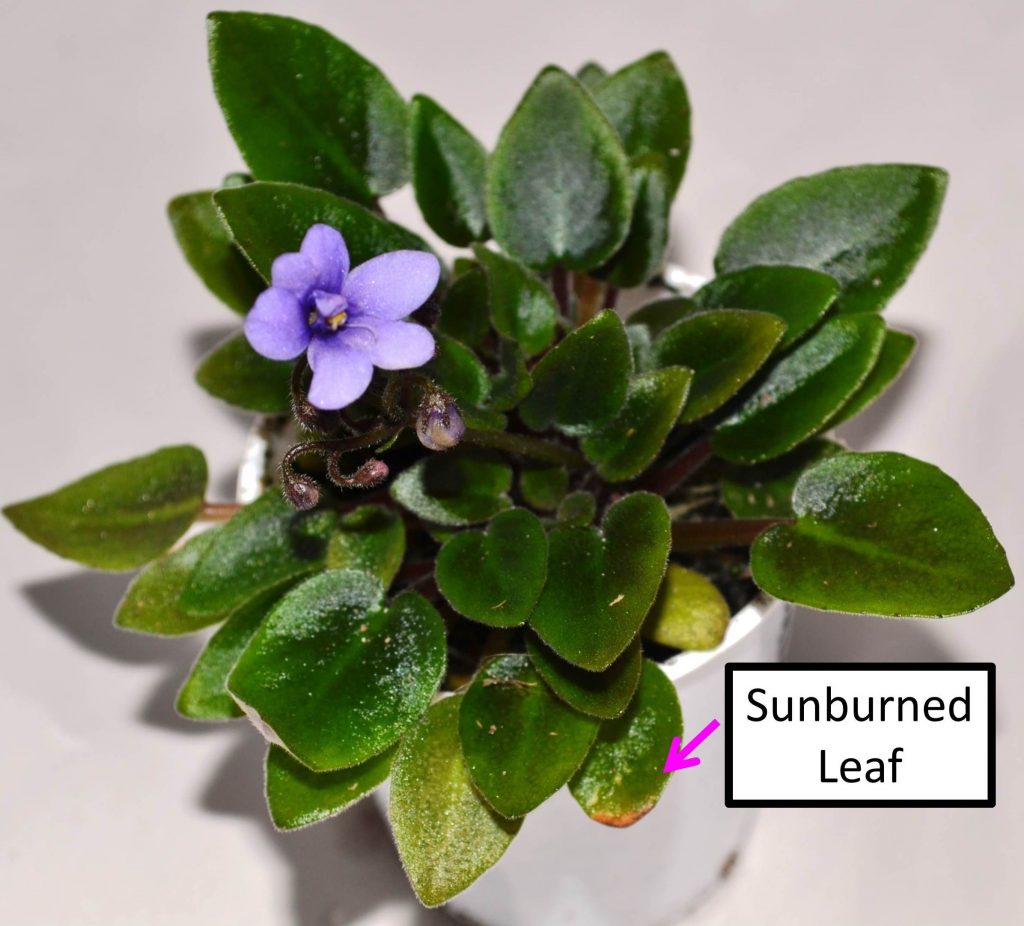
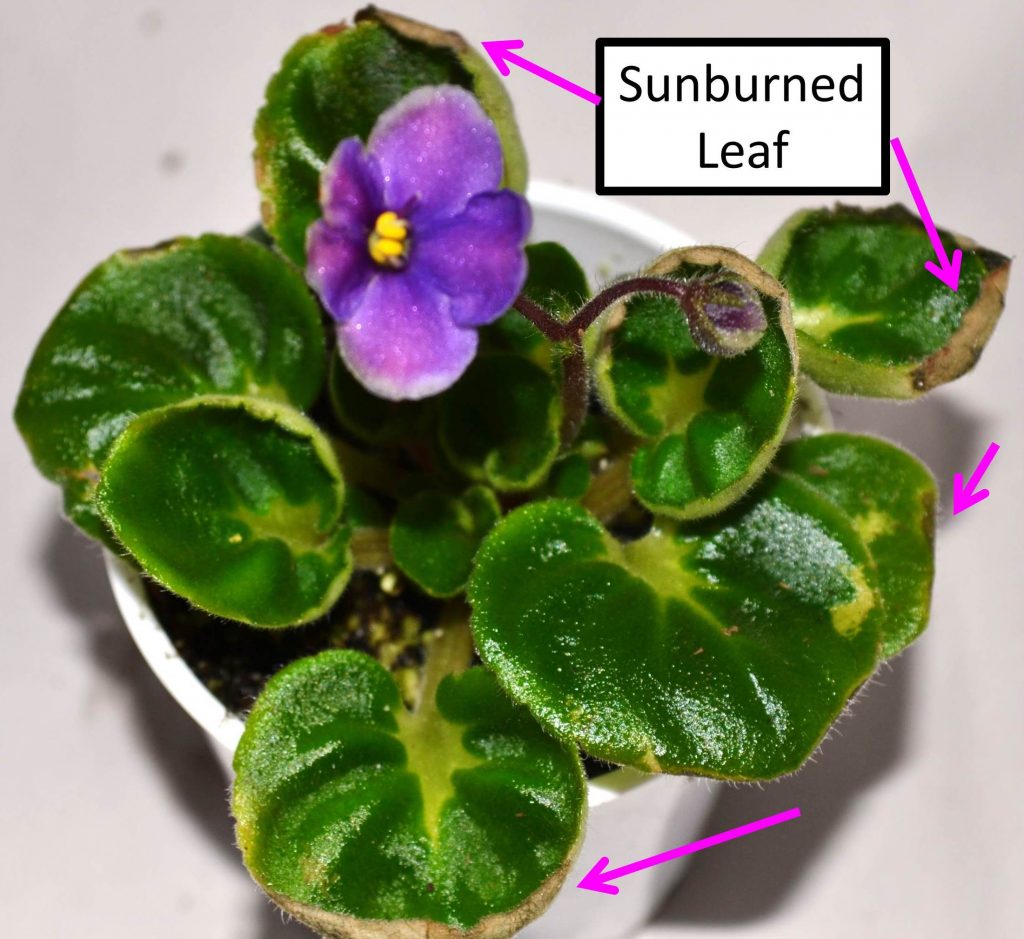
- Cold drafts: If the plant is continuously experiencing a cold draft (like near an open window or AC vent), then leaves will turn brown and start to become limp/mushy.
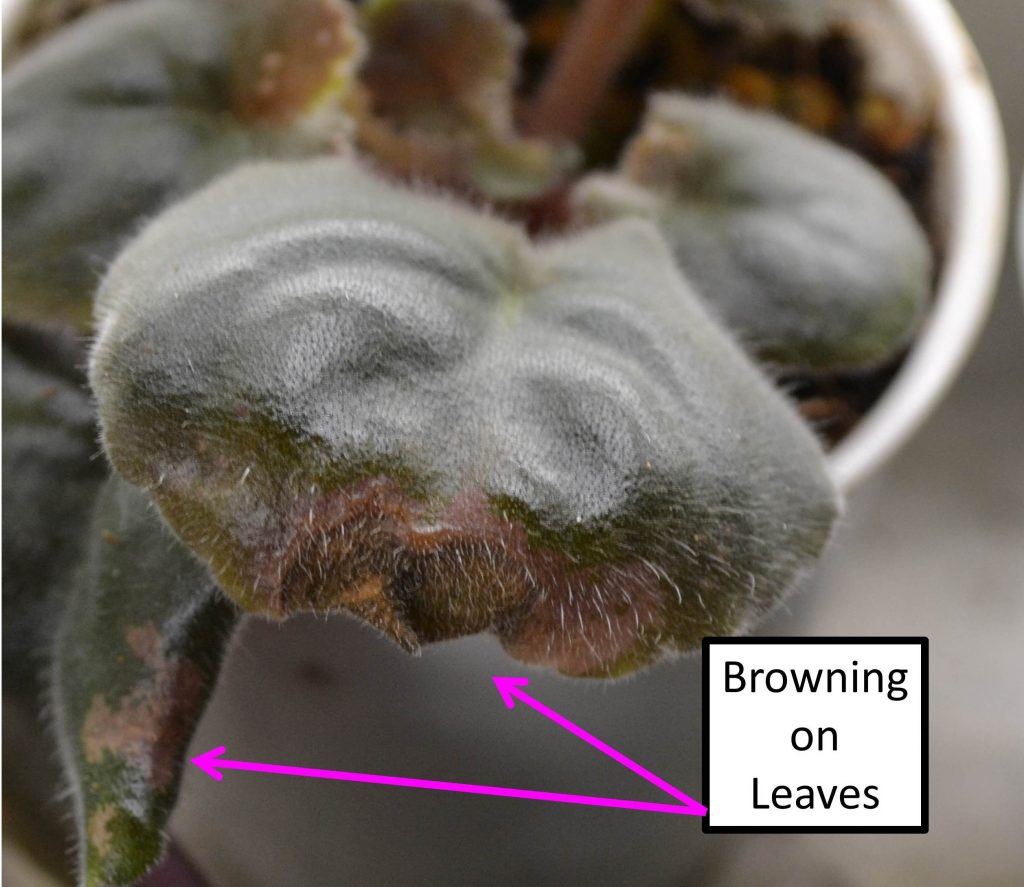
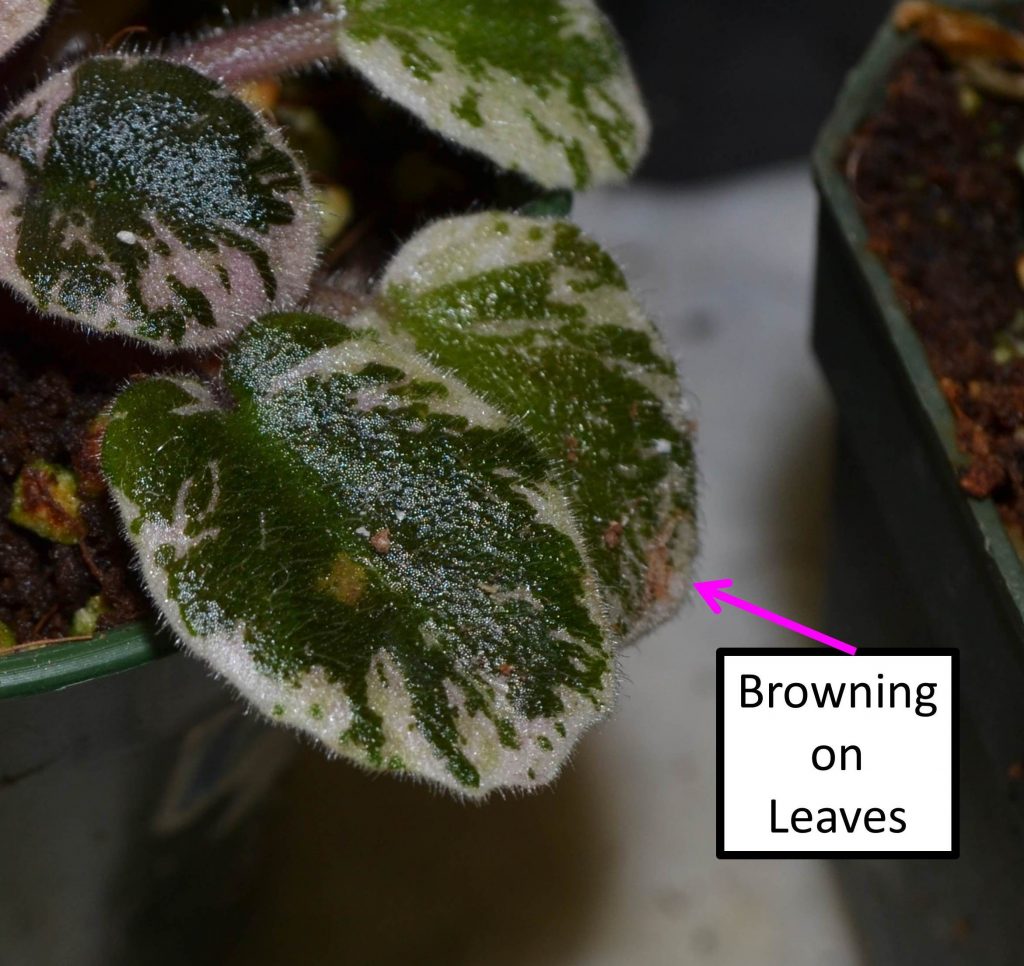
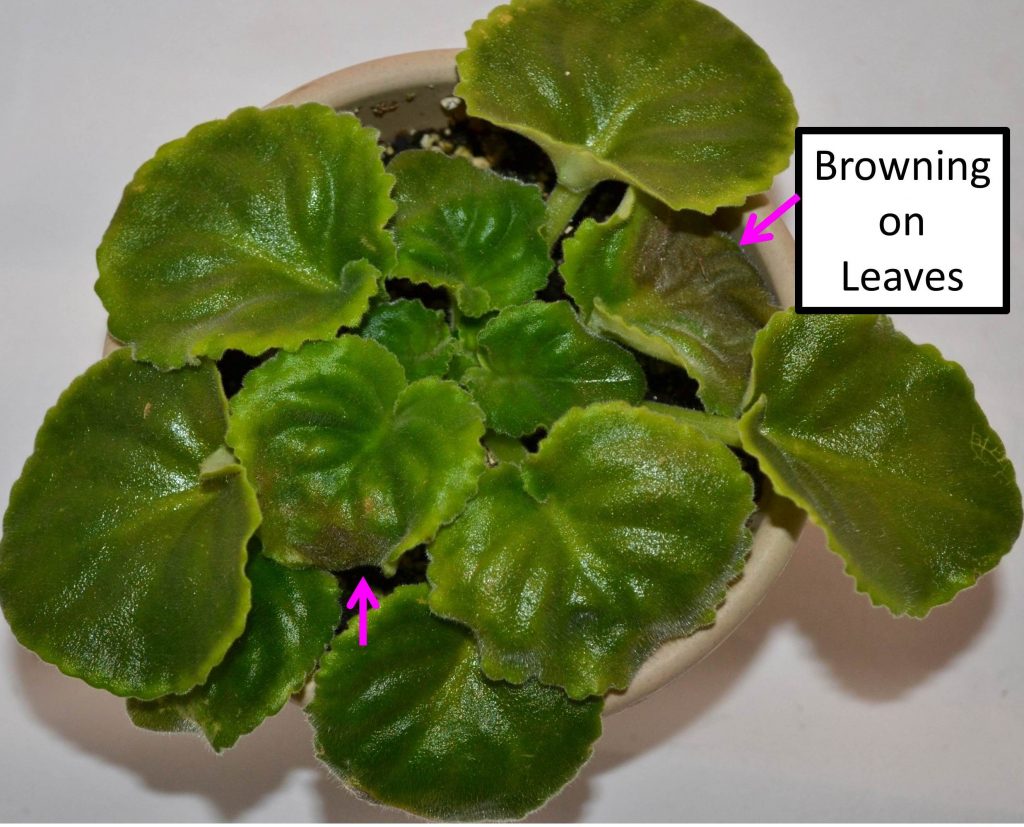
Below are examples of temperature and humidity meters, useful to keep in your growing area, especially when monitoring powdery mildew on your plants.
- Old Soil Mix: If the leaves on the African Violet plant are continuously browning, even after making above changes, then it’s time to repot.
- Check the size of the pot; make sure it’s not outgrown its current pot.
- Use fresh potting mix and repot the African Violet.
- Violets benefit from repotting at least once every 6 months.
- Variegated leaves (white, pink, yellow) in color, are more prone to browning as they are delicate and can get bruised easily.
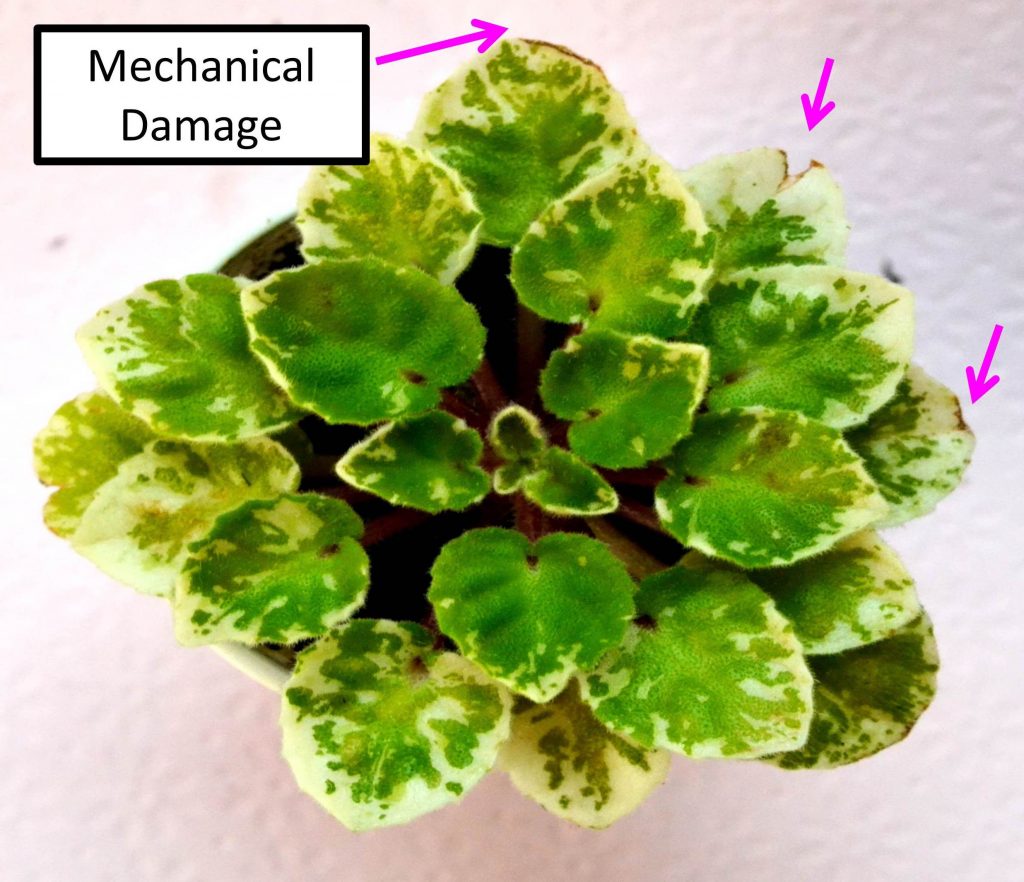
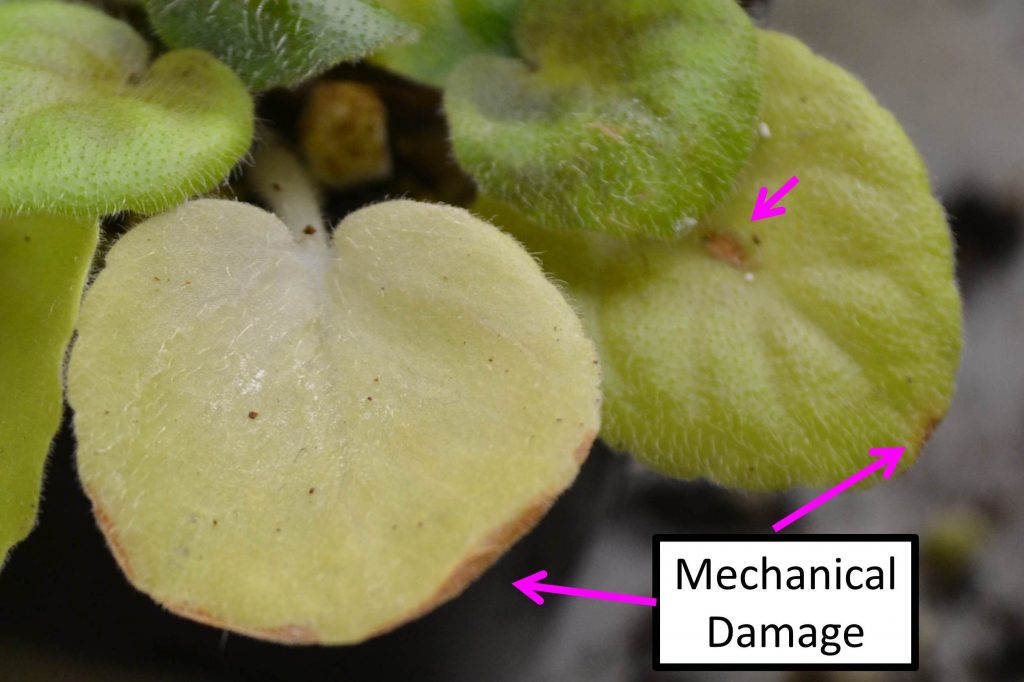
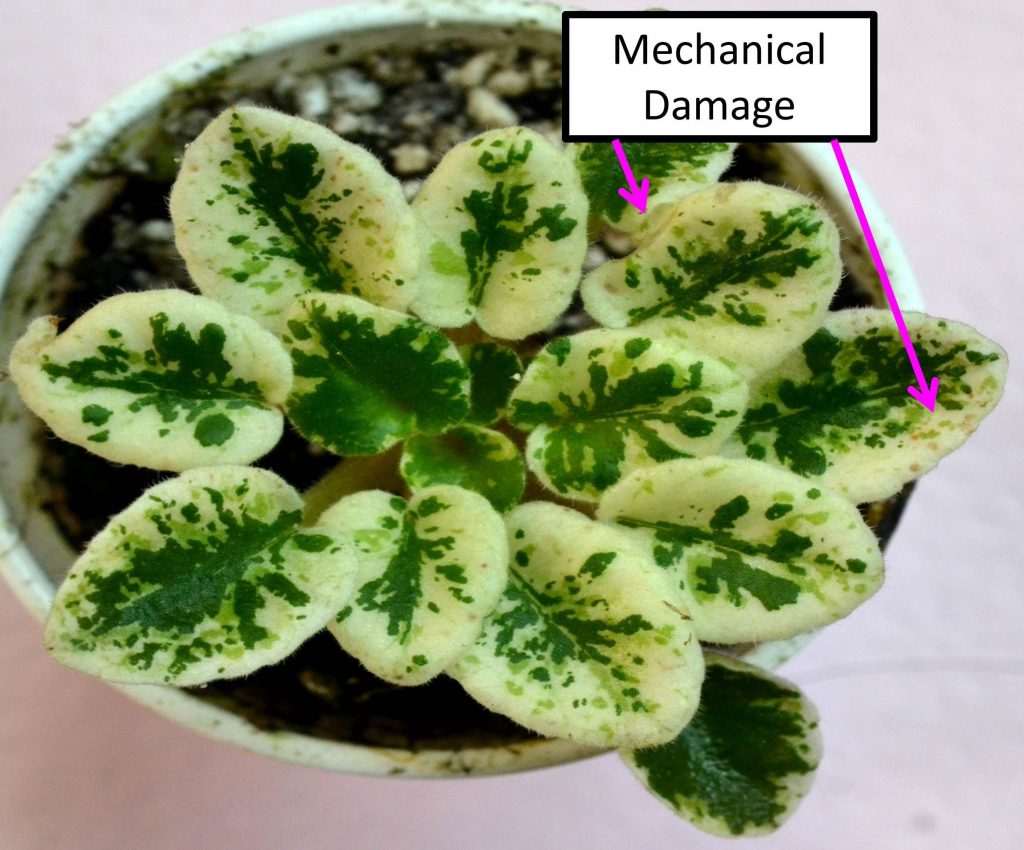
Why do you have to remove brown leaves from African Violet plants?
- To maintain a healthy plant it is important to remove brown leaves.
- Once the leaves turn brown, they do not change back to the regular color.
- If one leaf is brown, it doesn’t mean the browning effect will spread to the other leaves.
Examples of self watering pots for African Violet plants as shown below:
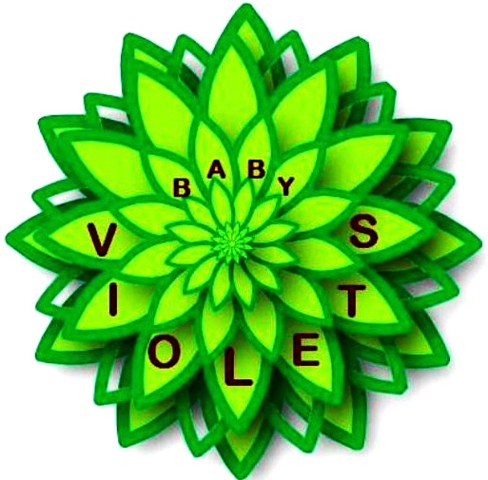
*Our Affiliate Programs: We are a participant in the Amazon Services LLC Associates Program, an affiliate advertising program designed to provide a means for us to earn fees by linking to Amazon.com and affiliated sites.
Though we do link to many items on Amazon out of convenience to our readers, we do also participate in other affiliate programs that also pay us a commission for any purchases you might make through our links (at no additional cost to you!).
Like this article?
Share on Facebook
Share on Twitter
Share on Linkdin
Share on Pinterest

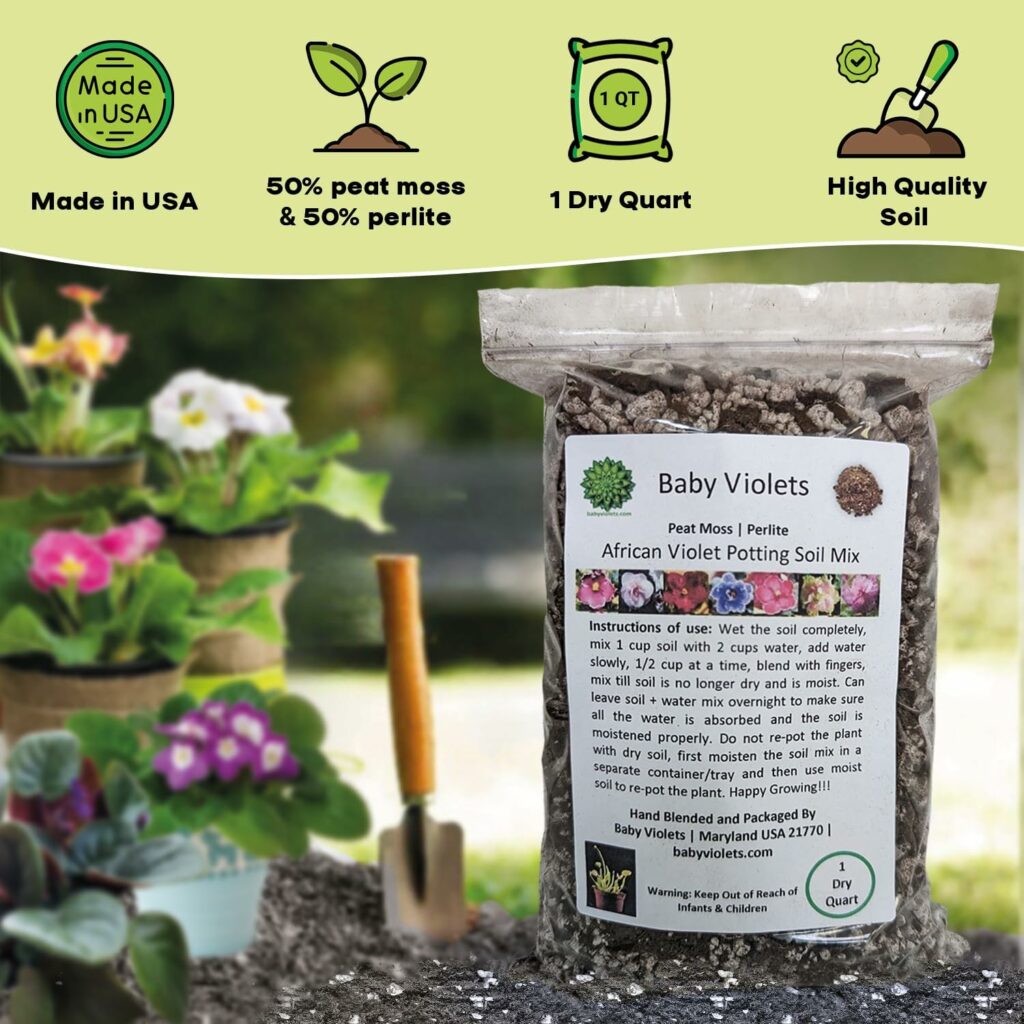
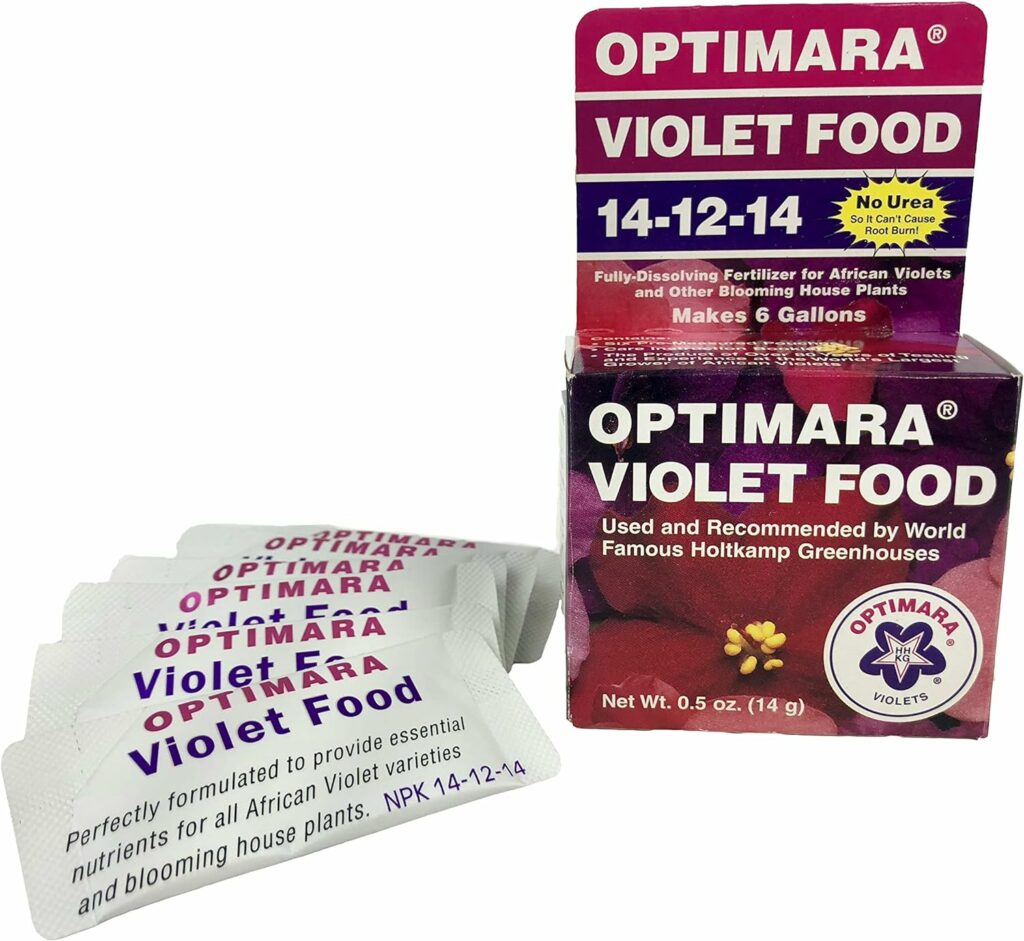
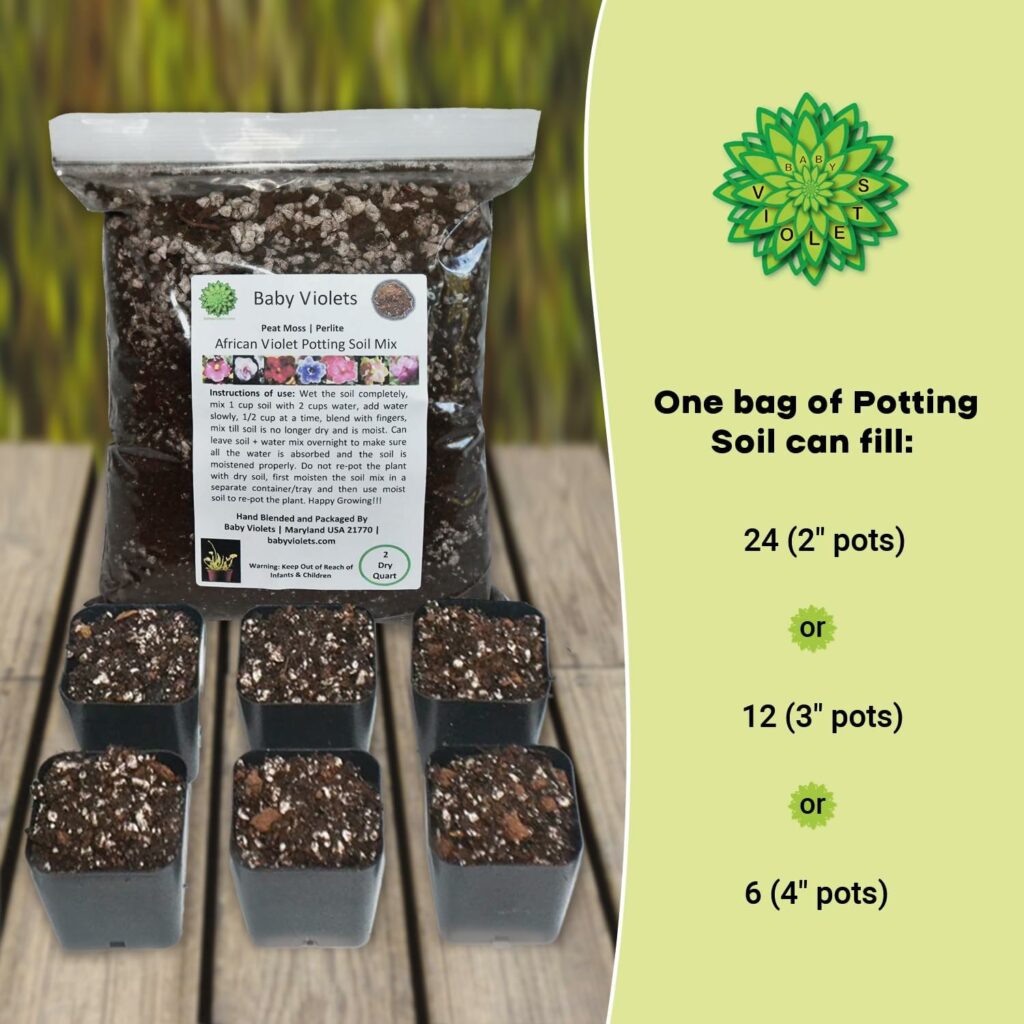


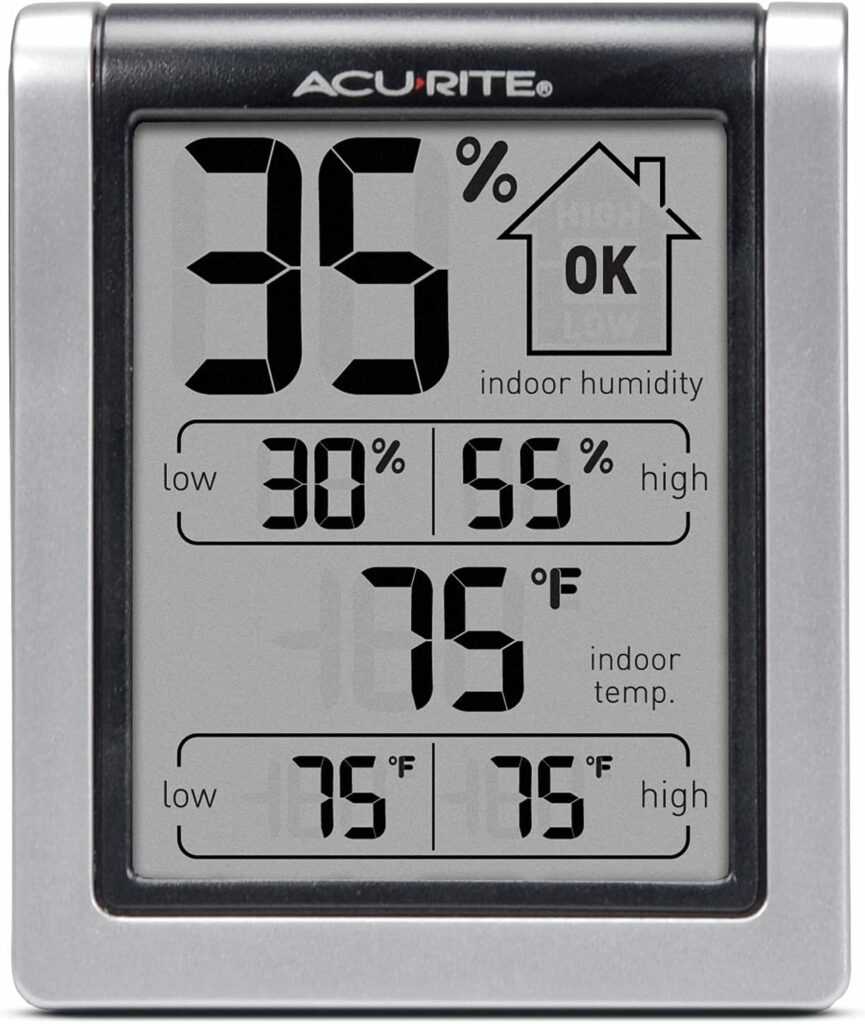
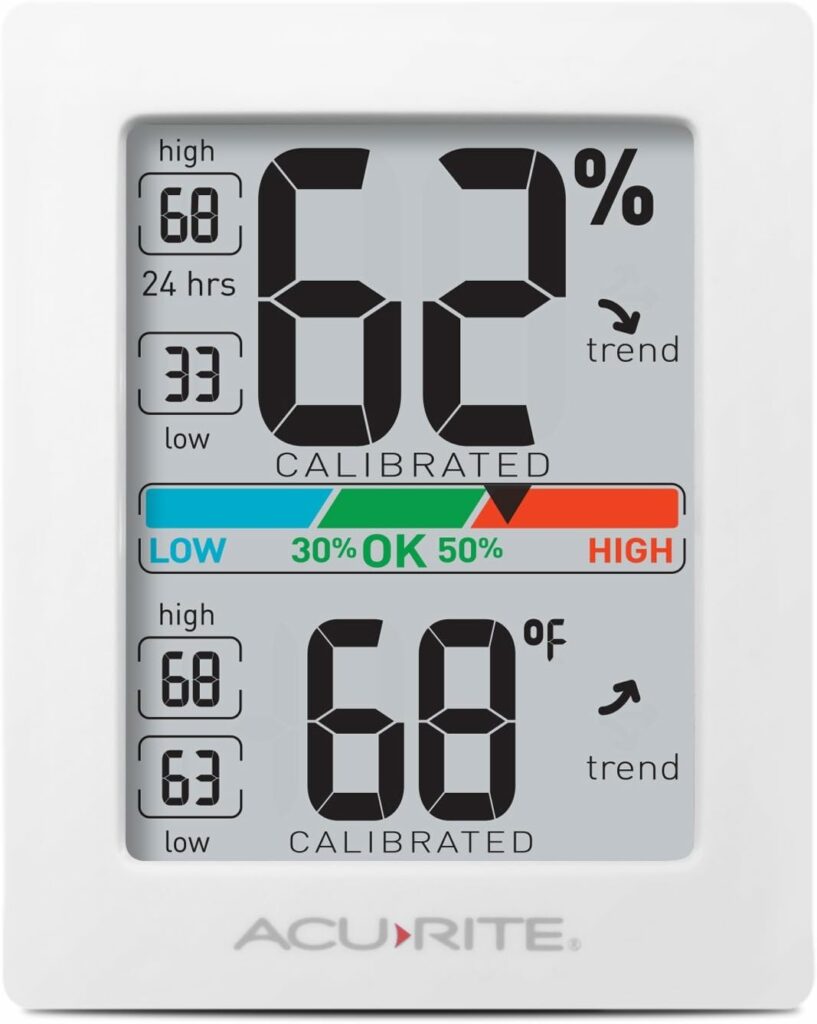
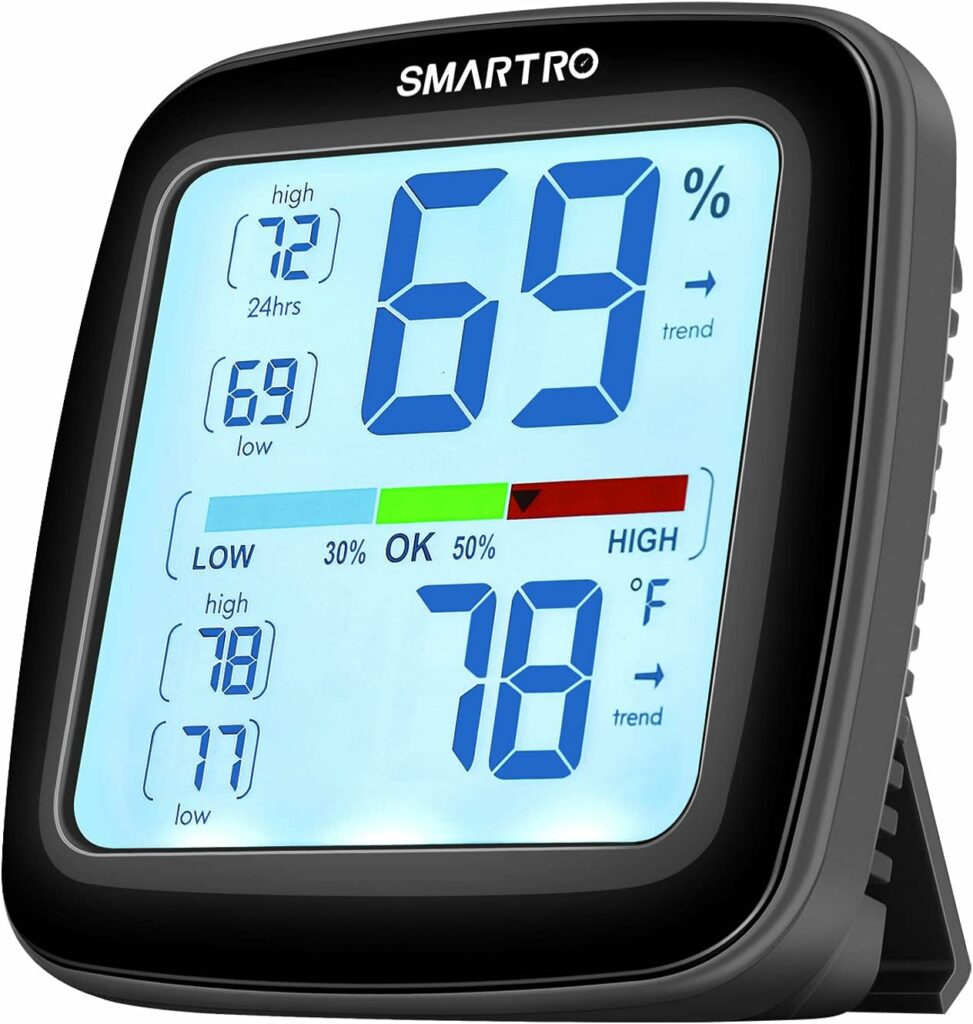
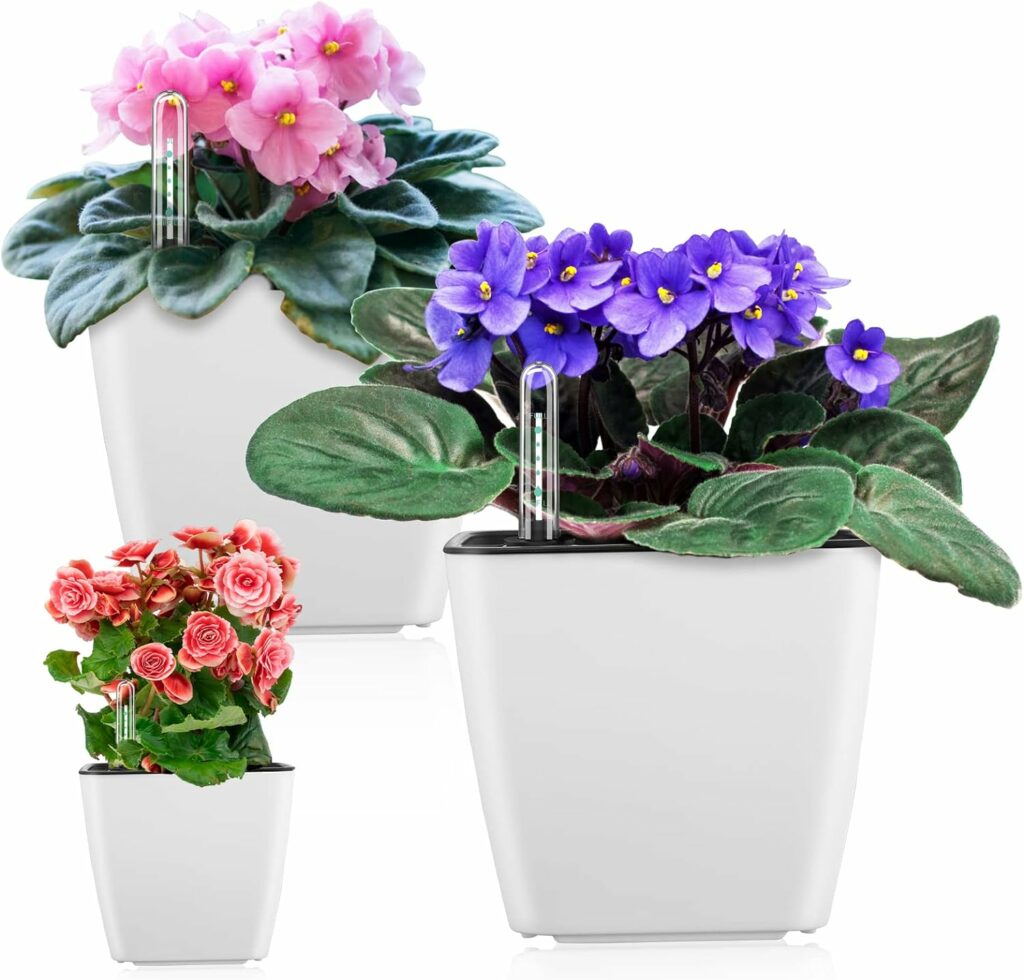
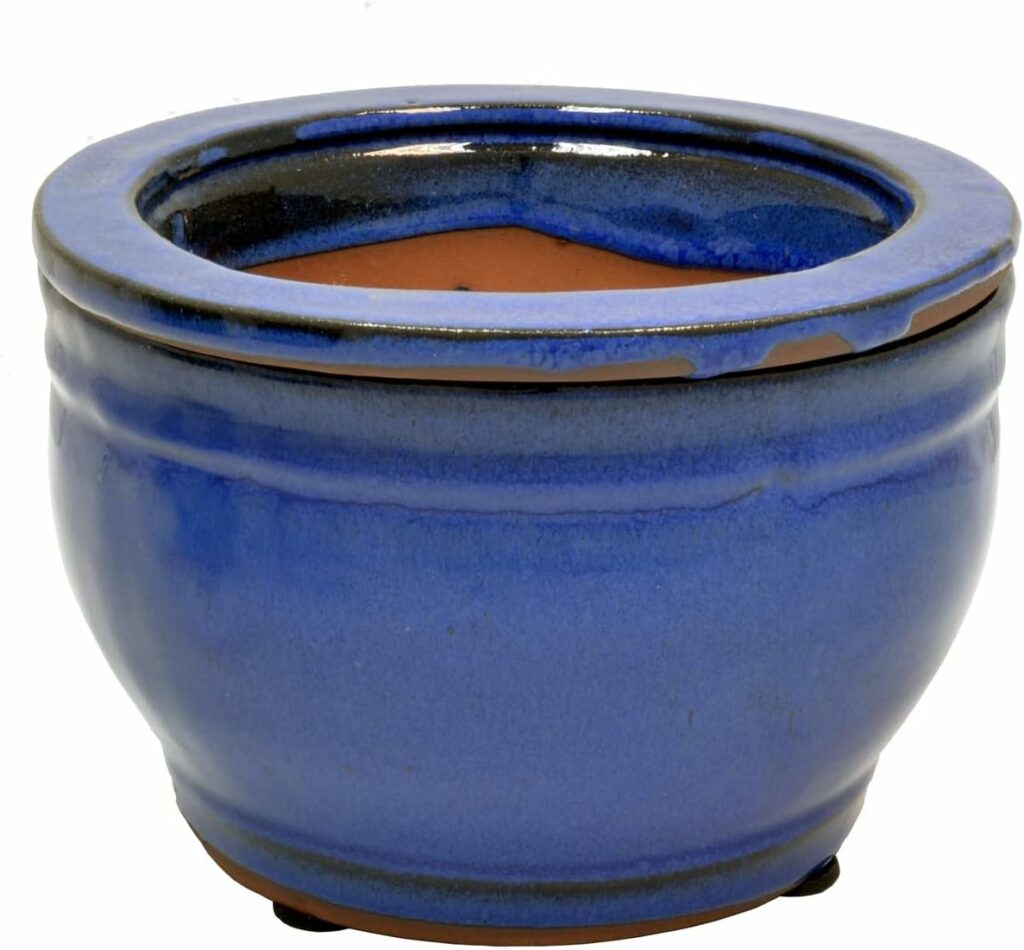
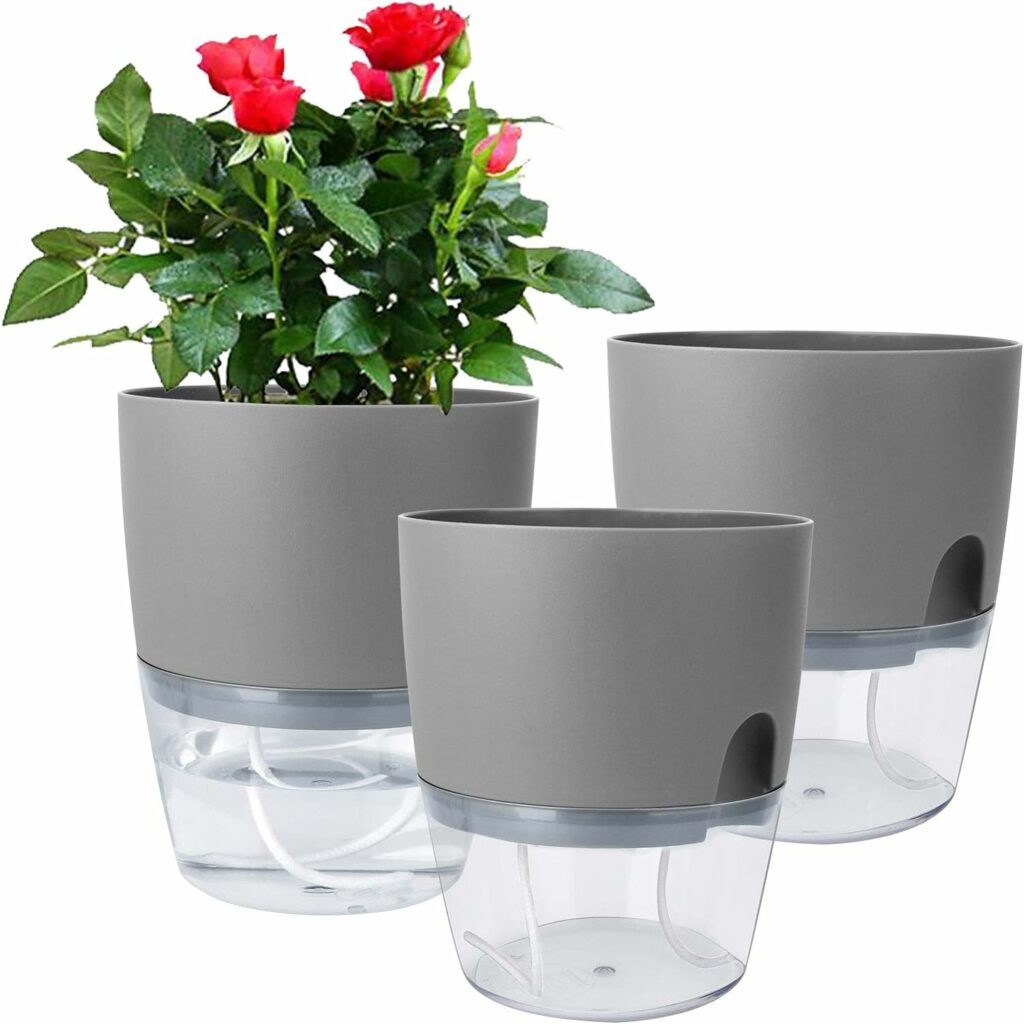
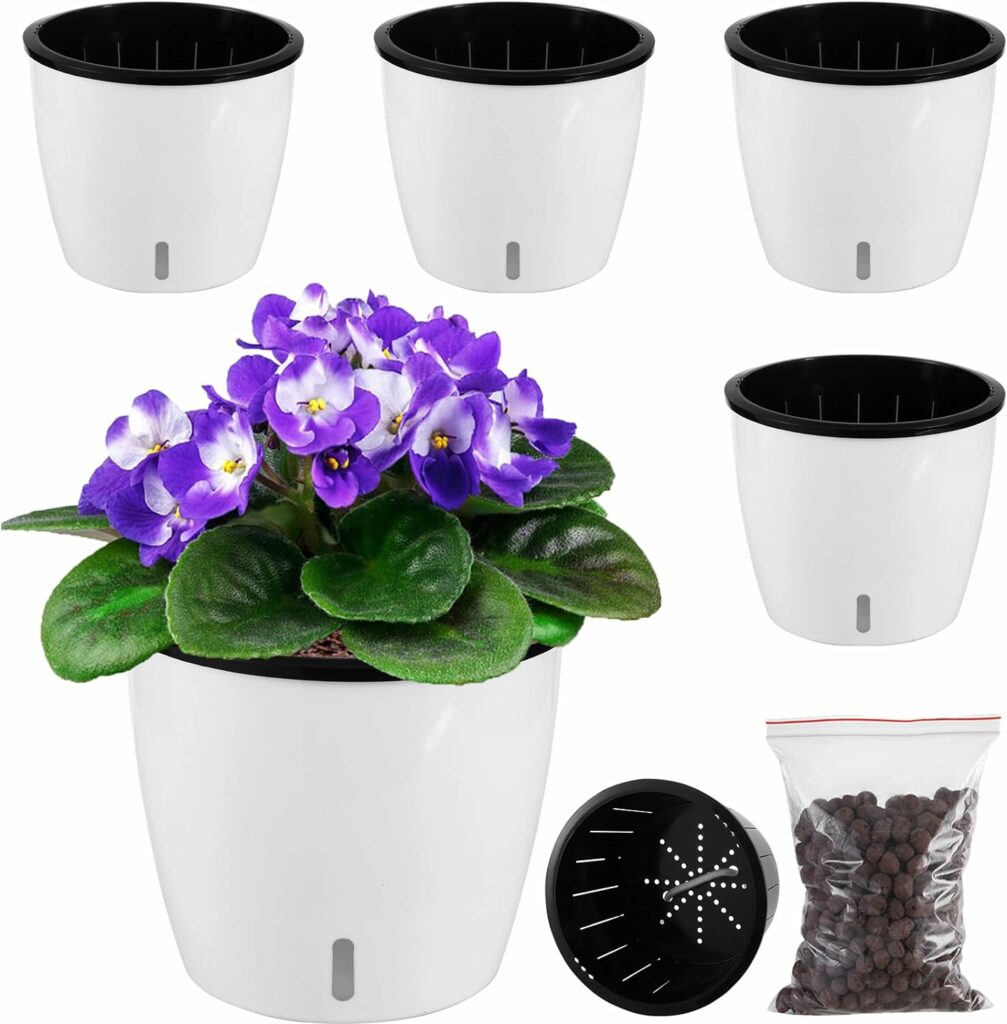

20 Responses
I HAVE ONE PLANT OUT OF ABOUT SIXTY THAT HAS TWO DIFFERENT SHADES OF GREEN ON THE SAME LEAF. IT’S ON A WINDOW SILL WITH NINE OTHER PLANTS THAT ARE NOT AFFECTED. ABOUT HALF THE LEAVES ARE AFFECTED.
GREAT SITE, THANKS FOR YOUR HELP.
Hello,
Yes sometimes, the leaves on the same plant can be of different colors. Maybe that plant is closer to the window or further away from light on the window. This can happen when there is a sudden change in the environment. For e.g. the temperatures went cold, the plant was overwatered or too much light, fertilizer, can cause the a whole row or set of leaves to change color. Once conditions return to normal, the new set of leaves will be different in color. As long as they look healthy, they should be fine. It could be just an individual trait for the plant too. regards, BV
Thank you so much>
Hello, I have many plants which have been flowering beautifully but lately the flowers’ edge becomes brown and all flowers wither soon after opening. This happens to most of the plants. Have you experienced this problem before and what is the solution please?
Thank you very much!
Hello, sorry to hear about your problem with the flowers. This has not happened to me before and I am not sure at all why this happens. My first thought is either over or under watering. Are they receiving strong direct sunlight, that can turn flowers brown too. More extreme cases could be thrips, which hope its not. Sorry couldnt be of much help,
regards,
BV
My plant keeps loosing bottom leaves light green in color but still firm then turn and start to turn limp there is about 2 inches between soil and plant from losing leaves
Hello Karen,
thank you for your question. This sounds like the normal aging process in African Violets. The bottom leaves do turn either brown or light in color, they become limp and then die off. Its best to remove these outer older leaves. A change in environment or culture can also cause the leaves to change color. Hope this helps, regards, BV
Hi there! If you could help me i would greatly appreciate it (i’m really inexperienced with plants). I’ve got two african violets which one of them is very happy but the other is quickly dying. This plant has been living in the same pot (that has no drainage) for a little longer than a year and has been pretty healthy.But i put it in medium sun to a little less to even less. When it started to die i realized it didn’t have enough sun so i moved it to more sun. It stayed healthy for a while but recently it has turned very pale. It just bloomed and had lots of flowers so i assumed that it was fine but then i noticed that the flowers were dying after about 3-5 days (which usually those flowers lasted about 20 days). Now it has gone very pale and when i put any pressure on the leaves they crack. Some of the leaves on the bottom have turned mushy which i assume is normal but (based on the pictures above) there are lots of sunburned leaves. Should i remove the sunburned leaves even though they are near the middle of the plant? Also, i noticed that when i water it it takes like 3 seconds for the water to seep into the soil. And lately it uses water very quickly so i’ve been watering it more frequently. ALSO i think it might have outgrown its pot so i’m looking into a new pot that has drainage and will offer more space. Is this a disease? or maybe root rot? What does all this mean?
(sorry this is really long 😂) thanks, please help me
Hello Avril,
thank you for your question. Sorry to hear all your trouble with this one plant. First of all, from your description, it sounds like your plant needs to be re-potted in fresh soil. Gently take out the plant from the pot, if it has lots of roots wrapped out each other and is heavily rooted, its time to re-pot. You can re-pot in the same size pot with fresh soil. You can remove some of the roots gently, while you are removing the old soil, dont remove too much around the roots, they like to stay undisturbed. Also, take a look the soil, does it smell musty, look dull and crusty, it maybe time for fresh soil. If there just a few roots and quite a lot of soil, then maybe your plant needs to be fertilized. I would recommend, this optimara fertilizer https://amzn.to/3oXUvCB . About removing the leaves, you can remove the older outer leaves. Dont remove the middle leaves for now. Let the center leaves grow more and once the middle leaves become the outer leaf ring, you can remove them. If the middle leaves, become mushy and brown, then yes, you will have to remove them. About light, they dont like direct light, which maybe the reason for pale leaves (though that could also be due to lack of fertilizer too). Move them out of direct light and keep them in a place with bright light, but not the sun rays hitting the plant directly. They like bright indirect light (filtered light). I dont think its a disease. Yes, you are right, I think it just needs to be in fresh soil, maybe in a new pot, but not necessary. I dont think its root rot, you can gently pull out the plant from its pot, if the roots look brown, mushy it may be root rot or if the crown stem of the plant is soft and mushy, it may be crown rot. But first try changing into fresh soil and fertilize. Then can see how the plant does. Hope this helps, regards, BV
Hi again! Thank you so much for your response. It’s been a while now and i’m glad to say my plants are both healthy. I made some improvements (new pot and less light) and my one plant is no longer pale. The leaves have gotten their green color back and it just recently flowered again. But, do you have any tips on how to remove crowns without harming the main plant?(cuz one of my violets has three crowns because i used to think that suckers were just cute baby leaves 🥴) The plant with three crowns is still healthy i just personally think it’s not the most aesthetically pleasing with all the leaves going all over the place lol. But it’s also currently flowering so should i wait for it to go out of bloom and then try to separate the crowns? So many questions 😂
Tysm!!
Hello, It is so great to hear your African Violet is thriving!! To remove the extra crowns (suckers), I would recommend a sharp tool such as a knitting kneedle, a pointed tip forcep or a sucker plucker. I use a sucker plucker such as this one, https://amzn.to/2WAq1Ld , I have had mine for over 10 years and still works fine. With gently pressure, its easy to slice off or scoop off the sucker at the base of the crown. If the blooms are in the way and cause an obstruction to removing the suckers, then you can wait for the blooms to pass, otherwise if they are small suckers (less than an inch in diameter), you can remove them. If they are larger, I would wait till the blooms have spent and then do a proper clean up. Hope this helps,
regards,
BV
Hello! Thank you for the wonderful article, I am so glad I found your website. I got my violets about 3 months ago and they had flowers on them. However, within a week the flowers all drooped and died, while the plant had been healthy. About a month ago my plant’s stems started becoming very weak and soft. and the leaves started to droop. I tried watering more for one week and watering less for the other but nothing seemed to help. Due to an emergency, I left my plant with a friend for a month and I was surprised to see my plant had thrived and all the stems were firm again. Within a few days of being in my room, the stems started to soften again (I had not watered yet.) I have since identified that my room barely got sunlight in the winters and now with the clear skies, it’s definitely brighter but still, the bright sunlight stops right in front of my windowsill (due to buildings in the front.) After one watering and moving it to sunnier spots around my apartment throughout the day, the leaves firmed up again. And now for the past 2 days, I have been giving it direct sunlight for around 2 hours. I know it’s blasphemous to give the violets direct sun, but there is no other way of giving them bright light otherwise. Is there any hope for my plant to bloom again? It has been pretty much bud-less for the past few months. I, unfortunately, cannot afford to buy professional gardening fertilisers on my student-budget. Really sorry for the long read.
Hello Urvashi, thank you for your message. Its great that you figured out light is the issue with your plant. Sometimes that’s the hardest thing, figuring out what is wrong with your plant. Yes, if your plant is happy in that light and doing well, then yes you can leave it in that location. Keep an eye on it from time to time as the seasons change. Within 2-3 weeks you may notice bud formation in this new location. It takes a while for the plant to acclimatize with a new location and then start producing blooms. However, with regards to blooming, fertilizer is your best option. I would recommend the optimara fertilizer, it is not that expensive, can check out here https://amzn.to/3oXUvCB If that doesnt work, any other balanced fertilizer will work, with equal ratios of N-P-K. Hope this helps, regards, BV
What a great site! I have had my little violet for a year and I have one aesthetic problem I can’t find a solution for. I’ve learned the hard way not to get the leaves wet and that it gets sunburned as bad as me. But, the six to nine at a time strong flower stems are constantly causing the new leaves in the centre to become ruffled. Is there any way of preventing or curing this? I would rather that the leaves grew out flat. Can one remove the flower stems before they flower?
Hello Nora,
Glad to hear you like the site. With regards to the ruffling of leaves, is it just the center new leaves or are all the leaves ruffled. The ruffled leaves, maybe a natural leaf type of the violet and that is ok. If only the center leaves are ruffled, they look different from the other leaves and you think its because of the flower stems, then yes, you can remove the stems before they flower. Another way, maybe to guide the flower stem away from under/over the leaf and move it in between the space between two leaves. Try to adjust the flower stem if possible, wherever you see an open space. If you have too many flower stems, you can remove a few. Hope this helps, regards, BV
When wanting more violets, I will root a leaf in water, I do this often to give away. Preferring one plant to a pot, the last violet that I rooted and planted, created 3 additional violet plants in the pot. I separated the 3 plants and they too created two more plants per pot. In the 20 years that I have been growing violets, this has never happened. Have you seen this and is it normal?
Hello Judy,
how kind of you to share your plants. Hmm..interesting question. It may be that the plant you separated had tiny clear/pale plant shoots at the base and they just matured, grew out. I am not sure what’s happening, have not heard of this either 🙂
BV
I had an African violet plant that was not doing well, and on its way out. It was old and had grown a long thick brown woody looking stem. My daughters friend asked if she could have it. She miraculously saved the plant and showed me photos … it was beautiful again. That plant she now owned had pups a couple of times, so she started a new plant for me.
I also start new violet plants by both leaf and water. Love how the roots look in water… simply amazing! It’s my preferred method of starting a new plant. Wish I could send you photos of African violet leaf rooting for your viewers. I have 8 plants. It seems that once you fall in love with the african violet plant, there is no end to the variety of flower colors to make a collection of (or give for gifts). I have had african violet plants for years and never had problems with them until recently. I had to do a plant change of rooms, from the South window, to the East and West windows. They are also near grow lights. I appreciate your site because it gives me insight to the variety of changes and solutions your sight has presented. Thank you! Gail